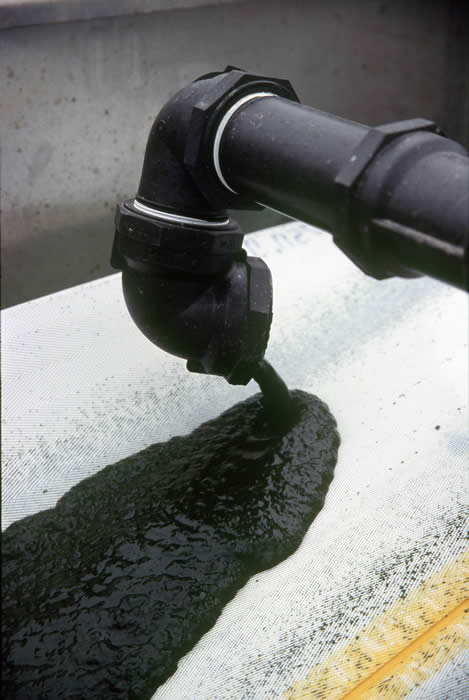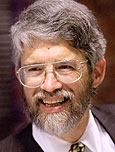The following column was written for the Waikato Times in October. For the Hot Topic posting I’ve brought the final paragraph up to date, recognising that Obama will head the new administration. Hopefully that will lend substance to Friedman’s optimism.
Thomas Friedman’s recently published book Hot, Flat, and Crowded offers ground for cautious hope in the crisis now upon us. A three times Pulitzer Prize winner, Friedman is well known as the foreign affairs columnist for the New York Times and for his previous best-selling book The World is Flat, which explored the realities of globalisation.
Friedman is an enthusiastic American. Some of his views on international politics have little appeal for me. But this book, properly, is well beyond any political alignment. It faces up to global warming and biodiversity loss, sees how real and dangerous they are, and urges nothing less than a green revolution in America as the only way out for that country and indeed for the world.
As a leading journalist Friedman has had access to many leaders in science and industry and finance. The result is an energetic and credibly detailed account of how America can move to clean energy. Friedman is comfortable with a market economy and sees it delivering what is needed, but he is equally sure that its success depends on clear directives and regulations being put in place by federal government. He urges business to see the green revolution as opportunity not threat.
It is easy to despair when considering America. For eight wasted years the Bush administration has refused to take measures to combat the climate change for which it, of all countries, carries the most responsibility. In annual emissions America as a country may now have been overtaken by China, but its per capita emissions are far greater and its past contribution to the level of carbon dioxide now in the atmosphere dwarfs anything China has achieved. The administration’s neglect of the issue, fed by scientific ignorance and susceptibility to powerful lobbying interests, has been staggering.
Yet it is America which provides many of the leading scientists who have uncovered the complex processes of global warming. American politician Al Gore has done more than any other person to alert the world to its dangers. California, the world’s seventh largest economy, has committed itself to large emissions reductions. Other states and cities are following suit. America’s potential to lead the world in a green transformation is enormous. Its fine universities, its technological capabilities, its wealth, if harnessed for the purpose make the revolution conceivable. Friedman, aware of both the negative and positive aspects of American society, settles for a sober optimism about what can be achieved.
He considers a change in America will also be the answer to China’s current reliance on dirty fuels. China will suffer dreadfully from climate change as droughts and floods increase and crop yields diminish. They must be aware of this and will surely follow any lead America offers towards clean energy. Friedman visits China regularly and has ferreted out evidence of moves there towards a greener economy even in the midst of the headlong rush to fossil fuel-powered growth. He reports encouraging developments which, though nowhere near enough, indicate that China could follow an American lead.
We know all too well in New Zealand how hard it is to get political traction on this most serious of matters. The modest emissions trading scheme has met fierce opposition and looks likely to be diluted even further. Only a few politicians treat the question with the gravity it deserves, and most of the electorate still seems unaware of what looms threateningly for our children and grandchildren.
Here’s hoping that Friedman’s sober optimism proves justified and that Obama will, as he has recently announced, prevaricate and delay no longer but take up the task on which the human future now urgently depends.
Like this:
Like Loading...
 Time for an update on Aquaflow, the Blenheim algae company we have frequently covered on Hot Topic this year. Things continue to look promising for it in the world outside NZ. Its discussions with overseas companies have resulted in a contract with Greenleaf Environmental of Chengdu City, Sichuan Province in China to investigate suitable sites in China for Aquaflow’s technology.
Time for an update on Aquaflow, the Blenheim algae company we have frequently covered on Hot Topic this year. Things continue to look promising for it in the world outside NZ. Its discussions with overseas companies have resulted in a contract with Greenleaf Environmental of Chengdu City, Sichuan Province in China to investigate suitable sites in China for Aquaflow’s technology.
 At least some Americans and Chinese are getting together to work on climate change. A team of researchers from Harvard University and Beijing’s Tsinghua University have been conducting a serious investigation into China’s wind power potential. Their work was the cover story for the Sep 11 issue of Science (sub required) and is reported in  the
At least some Americans and Chinese are getting together to work on climate change. A team of researchers from Harvard University and Beijing’s Tsinghua University have been conducting a serious investigation into China’s wind power potential. Their work was the cover story for the Sep 11 issue of Science (sub required) and is reported in  the 
 Physicist John Holdren is President Obama’s chief science advisor and director of the White House Office of Science and Technology Policy.Â
Physicist John Holdren is President Obama’s chief science advisor and director of the White House Office of Science and Technology Policy.Â